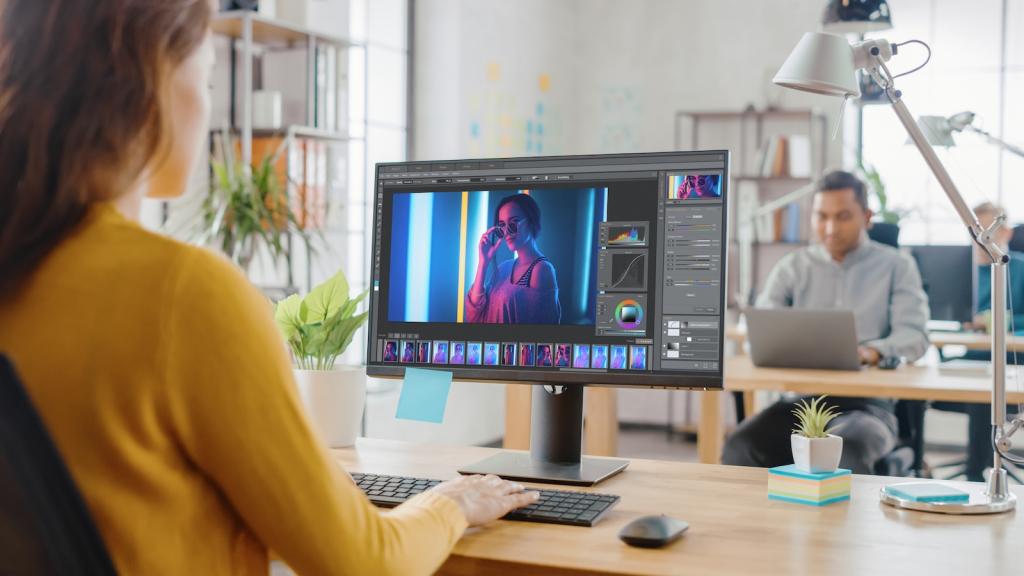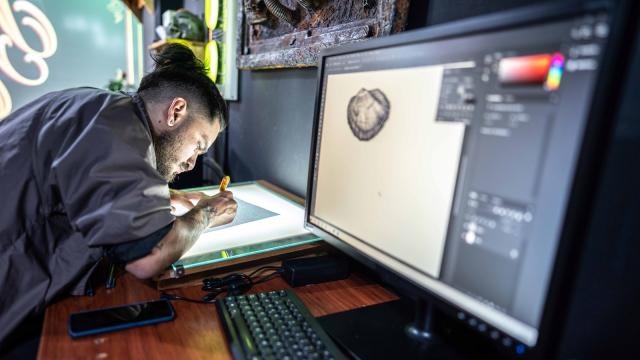Adobe’s Photoshop is one of the most popular image editing programs out there, but if you don’t know what you’re doing it’s easy to get stuck. If you’re learning to use Photoshop for the first time, here are a few tips and tricks that’ll take you from a beginner to a pro in no time.
Spend some time getting comfortable
If you’ve never used any form of graphic editing software, opening Photoshop for the first time can feel a bit overwhelming. The best thing you can do is to spend some time exploring the program’s various tools and features. You don’t have to know how the tool works, but it helps to know where it is if you need it.
It’s also a good idea to get comfortable with Photoshop’s various hotkey shortcuts. This will help streamline your workflow because you won’t be constantly stopping and starting to dig through various sub-menus to find the one feature you need. The more you use them, the more second nature they’ll become.
You can find a handy list of keyboard shortcuts here.
Try some guided tutorials
While “learn by doing” is certainly a helpful piece of advice, it’s sometimes a bit hard to learn if you have no clue what you’re doing. The good news is that Adobe has a series of guided tutorials for Photoshop that’ll help you learn the software’s various features. These step-by-step guides are interactive as well, so you’ll be getting hands-on experience.
Learn your layers
One of the most important pieces of advice we can offer to anyone starting to learn Photoshop is that you should never make any destructive edits to the original picture. Instead, you make those edits on various layers. These layers can be stacked on top of one another and will let you make edits and add elements, like text or other images, to your image. These layers don’t interact with one another, so if you delete one you won’t be affecting the rest of the image.
Mask layers will let you edit a specific part of the image while leaving the rest of the image untouched. For example, if you want to increase the brightness of an object in a photo without altering the rest of it, you’d select the object (more on that in a moment) and create a masking layer for it.
How to select certain objects
We mentioned selecting specific objects to edit in the last section, so how exactly is this done?
While you can use the Lasso tool to select certain parts of your image, Photoshop has a tool called Object Selection, which does exactly what it says on the tin. When this tool is active, you can just hover your mouse cursor over your image and Photoshop will give you selection suggestions. From there, you can create a new layer that isolates that part of the image for or from editing.
If you find yourself struggling when it comes to selecting specific parts of the image, Photoshop also has ‘Select Subject’ and ‘Select Sky’ tools, which use advanced machine learning-based Al to help you out.

How to remove objects
One of the most popular features of Photoshop is its ability to remove certain objects from images. So how can you do this?
First, select the object you’re looking to remove, and then select the Content-Aware Fill. This tool will remove the selected object, seamlessly filling in the space it leaves behind. It’ll show you a preview of what the newly edited image will look like, so you’ll be able to tweak it to get the exact fill that you want.
While the Content-Aware Fill tool isn’t always 100% accurate, it’s a good starting point and a very helpful tool to familiarise yourself with.
How to remove marks
So, you’ve taken a stunning photo that you’re excited to print and frame, but you’ve noticed there’s an unfortunate blemish that you now can’t take your eyes off. Maybe it’s a bruise on a piece of fruit, a stain on a shirt or a mark on a table.
This is where the Spot Healing Brush comes in handy. This tool samples data from the rest of your image and uses content awareness to seamlessly cover up blemishes.
There’s also the Clone Stamp tool which, as its name suggests, will copy the selected image data and allow you to stamp it onto your image. So, not only can you use it to cover up parts of your image, but you can also use it to add more of that element to your image.
Try presets
Are you trying to capture a particular kind of mood or aesthetic with your work, but aren’t sure what that is? Photoshop currently offers a selection of Presets which, as their name suggests, are premade filters and editing sequences. Think of them as an Instagram filter but for Photoshop.
Not only can you create your own presets for later use, but you can also download ones created by other Photoshop users.
Name your layers and files correctly
This is a handy piece of admin that’ll help you out in the long run. Naming your Photoshop files correctly will make searching for older jobs and/or previous iterations of jobs so much easier.
The same can be said for your layers. If you’re doing a big Photoshop product with a lot of layers, knowing which one is which will make sorting through them a lot quicker if you need to make any tweaks.
Save frequently
This might seem like an obvious tip, but it’s the kind of thing you can take for granted until it’s too late. It’s better to be safe than sorry!
For what it’s worth, the shortcut keys to save are ‘CTRL/Command + S’. So get comfortable doing that frequently – unit it almost becomes a reflex – and you’ll be better for it.
You can subscribe to Adobe Photoshop here, with plans starting from $29.99 per month.
Image: iStock/Frazao Studio Latino

Leave a Reply
You must be logged in to post a comment.